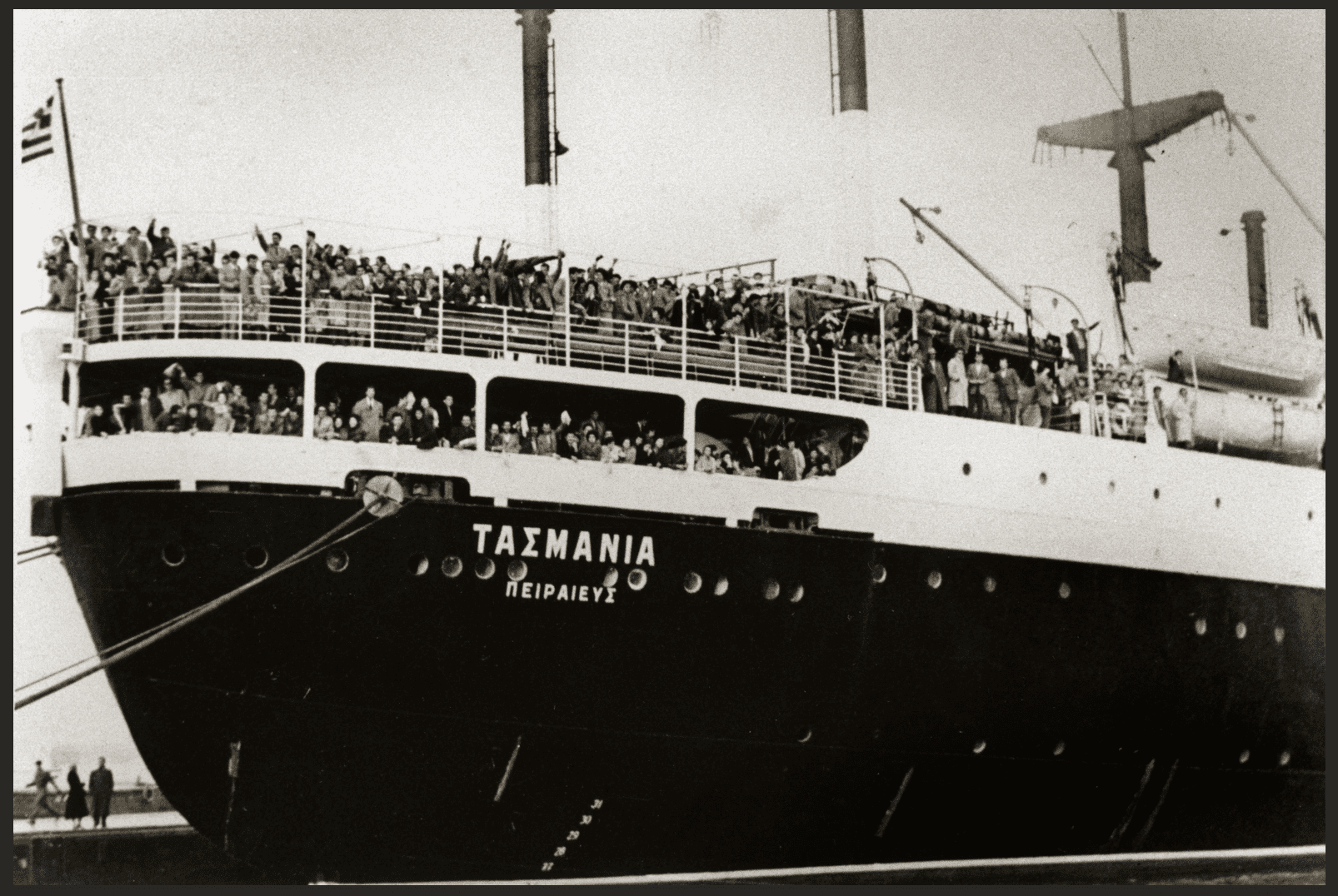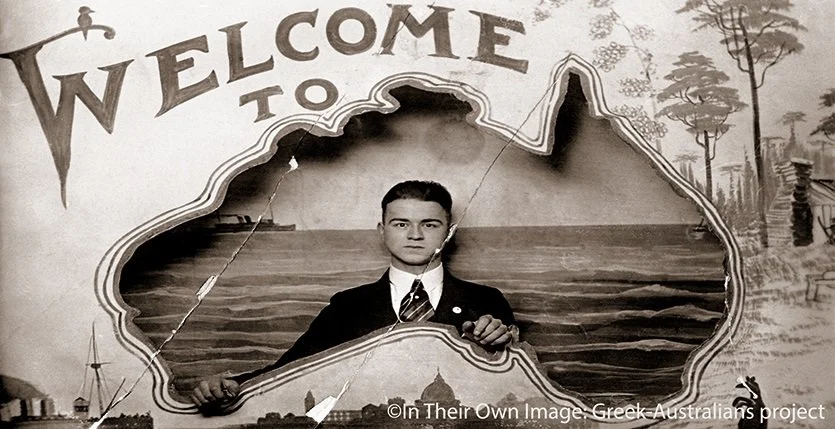Greek City Times is proud to present a weekly historical snapshot
from the archives of the ‘In Their Own Image: Greek Australians’ national project
by photographer Effy Alexakis and historian Leonard Janiszewski.
GREEK-AUSTRALIANS – THE MIGRATION
Individual and collective stories of the personal reasons for migrating, as well as recollections of the journey out, are often peppered with a sense of loss, anxiety, fear, hope, duty, need, and determination. This is the final part of a 3 Part series. This final segment will highlight ‘bride ships’ as well as an example of the major dangers posed by travel on repurposed vessels utilised as ‘migrant ships’.

The pattern of gender imbalance in Greek migration to Australia during the period prior to World War II initially continued during the post-war migration boom with males still greatly outnumbering females. Between mid-1953 and mid-1956, Greek male ‘assisted migrants’ exceeded Greek female ‘assisted migrants’ by five to one. Whilst both married and unmarried Greek men were arriving in Australia, the effect of draining single men away from Greece – particularly in regions heavily involved in early and ongoing migration to Australia – was devastating to the unmarried women left behind. Many single women would wait and hope that someone amongst those men who had migrated from her village would remember her and propose marriage.
In 1956, a program was instituted to redress the imbalance and bring out single Greek women. Such women would be trained in Athens for domestic work in Australia, as well as being taught basic English. Like other ‘assisted migrants’, they would be contracted for two years to the Australian Government, which would find them suitable employment. Between 1957 and 1963, more Greek females than males arrived in Australia, most though, it appears, as privately sponsored migrants rather than ‘assisted’. With migrant ships carrying large numbers of single Greek women to Australia, many as prospective brides for Greek men, the vessels became known as ‘bride ships’.

One of a number of ‘migrant ships’ which brought post-war Greeks to Australia. Built originally as a cargo vessel in 1940, the ship was soon converted to an aircraft carrier. After World War II it was rebuilt to serve as a cargo vessel yet again, and later as a bulk carrier. In 1949, following another refitting, it was utilised as a passenger ship with quarters for 600 persons. In 1955, Hellenic Mediterranean Lines acquired the vessel for its Australian passenger route naming it, ‘Tasmania’.
Peter Antypas came out from Greece on the ‘Tasmania’ in 1956. He was “one of about 1,500 Greek migrants” on board – overcrowding poised a major safety concern on migration vessels. Peter recalls: “I nearly drowned in Melbourne harbour! A big hole – water came up three to four meters”. Records confirm that on 3 April 1956, while entering Port Phillip Bay, the ‘Tasmania’ ran a ground and suffered damage to the bottom of its hull. Repairs delayed her departure by eleven days.
The vessel ended its service in the manner in which it had commenced – as a cargo ship. Early in 1962, whilst being broken up, fire swept through the vessel totally destroying it.
Photos: Effy Alexakis
Historical Research: Leonard Janiszewski
© In Their Own Image: Greek-Australians National Project Archives


Since the early 1980s, Effy Alexakis, a photographer, along with historian researcher Leonard Janiszewski, have been travelling around Australia photographing and collecting stories. They have also photographed Greek-Australians in Greece and documented some amazing histories. The images and text provide personal, diverse and powerfully moving insights, about opportunities, hopes and challenges. Collectively, these stories provide personal perspectives of a diasporic Hellenic identity. Their archive encompasses photography, both historical and contemporary, taped interviews and literary materials.
They have published 3 books and numerous articles, and their projects are ongoing. The photographs have been widely exhibited throughout Australia and in Greece.
VISIT THEIR LATEST PROJECT: Greek Cafés & Milk Bars of Australia | Facebook


